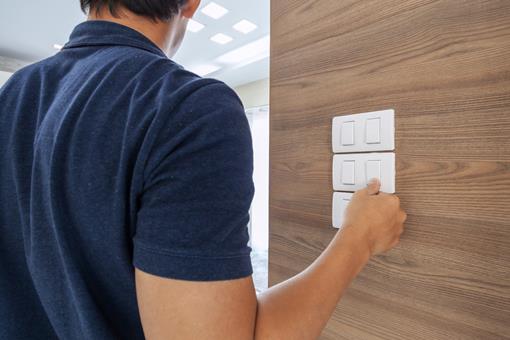Energy saving tips for winter

Energy saving tips for winter
As winter is approaching, and the rise of energy costs is soaring, SBMs need to consider their energy use and keep track of it. Schools use heaps of energy which is expensive and can often overtake the schools’ budget. During winter, schools use the most energy than previous seasons as climates drop. However, the cost-of-living crisis puts a strain on budgets and SBMs must implement changes to cut that cost.
Simple tricks can help reduce that cost and the school’s energy consumption by a considerable amount. We have outlined some energy saving tips for winter that SBMs can use to aid them in saving valuable money and energy.
Create a green policy
To help your school cut vital costs and energy consumption, create a green policy. This will aid SBMs with setting out an action plan to reduce energy, therefore leading to less money spent. Doing this will assist with the budgeting as well as it will set out the steps needed to be taken. Therefore, SBMs can work out how much money each step will help save.
Developing a green policy will also show staff and students that the school is committed to energy efficiency
Crucial information to include in this policy is:
- Mission statement
- Objectives
- Targets
- Roles and responsibilities
- Action planning
- Milestones
- Resources
Go smart
Create more accuracy by introducing smart meters into your school. Smart meters let you track, in real-time, the usage of energy which helps to reduce your bills. Ensure to monitor your smart meters and note down the energy uses and patterns. By doing this, you can track any fluctuations in cost. These may occur more in winter due to seasonal changes, however you may find the cost rising from regular monitoring. This can be due to a fault or appliances being left on when not in use. If this occurs, locate the problem and solve it as soon as possible.
Track the school's gas, electric and water usage with smart meters to help understand your energy use. From this you can pinpoint how to decrease it. Ensure that you know how to use smart meters to get the most out of them.
Draught proof the school
This is one of the oldest tricks in the book, yet it still is one of the most efficient and cost-effective to do. Help improve comfort whilst saving valuable money over the course of winter by draught stripping windows and doors. Doing this will help keep warm air from escaping outside as the gaps between windows and doors are sealed. If this isn’t done, heat inside the school gets lost outside making it cold and wasting money.
Draught proofing is the cheapest method for insulating your school and it can save up to around £20 a year in a home. Just imagine how much you will save in a larger building like the size of your school!
Check bills and tariffs
SBMs should know how much energy they are using in their school therefore can keep track of bills and tariffs. However, you must understand your bills and tariffs and analyse them too. This will help you check that they are accurate from your meter readings. It can also help you know if you are only paying for what you are using. You can determine if energy usage is up or down comparing to other years. Plus, you can see patterns that are high or unusual so that you can act when needed.
Make sure to see if the energy usage is reasonable for the time of year and the climate.
Make the switch
Energy saving in schools is difficult as prices rise due to the large space energy needs to cover. However, spikes in prices could be your current energy provider increasing their tariff. If you notice a spike in cost, then consider making the switch to another energy provider. Energy companies can legally change the tariff to a more expensive one which could cost you up to 30% more. To make the switch, look at comparison sites where you can match providers and find companies that can save you money.

Change to energy efficient lighting
One of the most effective energy saving tips for winter is switching to energy efficient lighting. In a typical educational environment, Carbon Trust said it estimates that lighting accounts for around 30% of electricity. To help reduce the cost SBMs can make small but significant changes.
Where possible, use lighting controls and replace all the bulbs with LED ones which uses up to 80% less energy than halogen bulbs. Plus, they last longer too. The upfront cost of LED bulbs is always dropping so will be a cheaper option for your school. You can also use tubular fluorescent lights that are very cost effective to run and have a long-life span.
It’s estimated that businesses lose £60m a year in the UK in wasted energy. As schools waste energy in areas that are rarely used, it is up to the SBM to reduce this wasted energy cost. To do this, you can install motion sensors to turn on lights when needed.
Keep track of water usage
Not only are electricity bills rising but so is the cost of water. The government believes that schools equipped with water conservation devices can use up to half the amount of those without. Installations such as urinal controllers, self-closing taps, flow restrictors and cistern dams are simple to fit, saving water and money.
Underground water pipe leakage can be a big problem in water efficiency. Ensure to read your meter in the evening and again in the morning. If you have had a noticeable change then a leak is more than likely the cause.
Encourage switching off appliances
A great tip for energy saving in schools is encouraging switching off various appliances. Involve staff and students in switching off appliances wherever possible by letting the school take shared ownership on saving energy. Have meetings with staff to drive the importance of switching off appliances after use. Guide them on how to involve and teach students on saving energy in small ways.
Set an example to staff and students by demonstrating switching appliances off yourself. You can also host assemblies talking about energy consumption and how to save energy to entice students to participate.
Some appliances to turn off could be computer screens, lights, projectors, visualisers and speakers. You could opt for a wireless option of some appliances, such as our wireless speaker, to reduce the use of electricity.
Use renewable energy sources
A great way to save your school money is to use renewable energy sources. These are pollution free and reduces the cost of your energy bills. They can also generate interest in energy efficiency amongst students and provide a valuable teaching tool. Renewable energy sources can include wind turbines, biomass, solar power and heat pumps.
Often, these methods are costly upfront however, in the long-term you could find that your school makes significant savings.
Upgrade canteen appliances
Appliance manufacturers are constantly improving the efficiency at which their products operate. Dishwashers, ovens and fridges all use less energy today than they did 10 years ago.
Have a look around at your canteen facilities and note down how old they are. If they are quite old the chances are that they aren’t efficient for your staff to run. Upgrading them will have a large upfront cost, but over time your school's energy bill will fall.
Change to LED screens or smart projectors
Schools depend on screens to enhance lessons, aid materials and can also be used for fun games. Older TVs use a lot more electricity than modern screens. LCD screens and LCD TVs are being introduced into schools which saves money and cuts the energy consumption considerably. Also investing in smart projectors has the same effect which SBMs should consider for larger areas that need it, such as the school hall.
Investing in these LED screens and smart projectors will be costly at first. However, you will reap the benefits in the long-term as they will lower the school's energy bill.
Energy saving in schools doesn’t have to be massive changes or be done all at once either. SBMs can implement small changes at a time to save money in the long run. Take a look at what your school needs to change and prepare for the harsher winter months where energy prices soar. Use our energy saving tips for winter to guide you in accomplishing a greener and cost-effective school.
For more advice on having a sustainable school, that can also save you money, read our top tips for a sustainable classroom blog.



